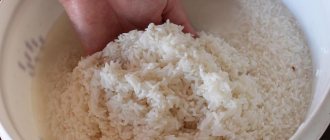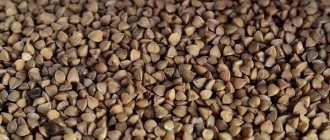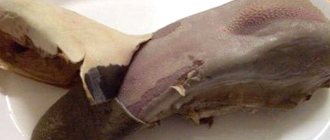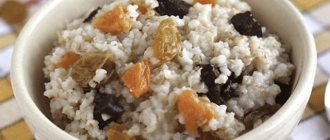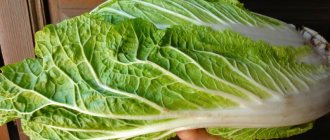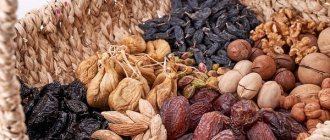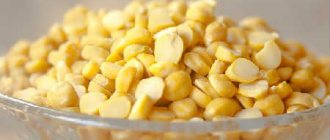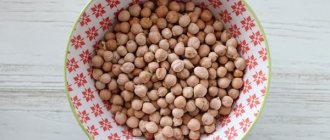For some dishes we need fluffy rice, for others - a dense lump, for others - something in between. This simple product can be very different, and in order for the dish to turn out exactly the way you want, you need to know how to achieve the desired consistency.
How the dish turns out depends largely on the type of rice. But not only that: sometimes the wrong cooking method changes the structure and taste dramatically. “Komsomolskaya Pravda” together with the chef understands how to properly cook rice in different ways.
Rice varieties
Before you cook rice, you need to determine what type of rice you need for your dish. Some options may be great for porridge or sushi, but will be tasteless in pilaf, while others are ideal for risotto, but it is not recommended to cook them as an independent side dish.
Among the most popular varieties of rice are:
1. Aquatics. Wild rice, which is good for salads and soups. Most often it is sold as part of a mixture, which needs to be boiled for 20-30 minutes. But pure aquatic water will have to be kept on the stove longer, 40-60 minutes.
2. Basmati. One of the most popular varieties. Long and thin rice is great for side dishes, pilaf and other oriental dishes. It is better to cook this variety steamed or covered, but even without this it will probably turn out well.
3. White rice. This is already processed rice, which is popular because it cooks very quickly: 10-15 minutes and can be served. The main disadvantage is that during the preliminary grinding that the grain undergoes, most of the beneficial properties are lost.
4. Long grain rice (indica). This rice is ideal for side dishes and salads, as it does not stick together when cooked. This is one of the most popular varieties around the world. You need to cook it for about 20-30 minutes.
5. Jasmine. Pilaf or a side dish will turn out well from this variety, but for preparing sweet dishes (for example, kutya), there is no better option. It is recommended to remove jasmine from the heat a little earlier than it is cooked so that it can “cook” in the cooling pan.
6. Brown (brown) rice. It is considered the second most useful type of rice. It contains more vitamins and minerals than others. You need to cook it for 25 to 40 minutes, and use it for salads and side dishes.
7. Short grain rice. An excellent option for preparing porridges, casseroles, and desserts. Can be used for sushi. But you need to take into account that it has a high starch content. This variety absorbs a lot of liquid and cooks in 15-20 minutes.
8. Medium grain rice. A good option for making risotto and paella, as it does not have a pronounced taste and will not distract from the other ingredients. Cooks quickly: about 20 minutes.
9. Black rice. It is considered the healthiest variety of rice because it contains 2 times more protein than others. You need to cook this grain for quite a long time - about 40 minutes.
LiveInternetLiveInternet
Monday, January 05, 2015 13:00 + in the quote book There won’t be any beautiful pictures - I don’t even have anything to show before the kata. But it won’t be possible to do without pictures at all, I’ve been convinced of this more than once. After all, I have repeatedly written and talked about the fact that rice should be soaked. But it seems that only now, after a separate post about it, did it reach the readers’ consciousness. It’s the same with frying onions and carrots. I once had an assistant who spoiled dozens of pilafs for me by stupidly killing the taste by overcooking onions, meat and carrots until they were charred. I was never able to explain to him that the skill of cooking pilaf does not lie in making it black and bitter from overcooked foods. It seems that frying and cooking meat in pilaf also needs a separate story, but there is no pilaf without rice. And the taste of the pilaf as a whole depends two-thirds on how well the rice is cooked.
To prepare pilaf, all varieties of rice, including pre-steamed ones, should be soaked and washed. Those who say that they never soak rice, but their pilaf turns out to be “finger-licking good”, firstly, did not lick their fingers after pilaf made from soaked rice and they have nothing to compare it with, and secondly... they still soak it, but they combine this process with washing. The result is poor soaking and poorly washed rice. To rinse rice that has been pre-soaked in hot 60C water, you need to take a container five times larger than the volume of dry rice. For example, we took a liter jar of rice - approximately 800 grams, which means that the dishes for washing should be at least four liters. It will be very good if the dishes are spherical or at least with a rounded transition from the walls to the bottom.
During soaking, rice readily releases the powder with which it is coated and the starch from its surface into the hot water. Run your hands along the sides of the dish to the bottom and lift them to the top so that the rice seeps through your fingers. Drain off the cloudy water.
Pour warm water over the rice and run your hands through the rice again, trying to lift as much turbidity as possible. Drain the water. It will be more convenient and faster to work if you place a metal mesh colander in the sink. The dregs will pass through it easily, and the rice will not be lost. Then it will be possible to drain the water more boldly and the washing will proceed faster.
Rinse the rice with warm water and never ice water, because the rice will crack very quickly in such water. I use warm tap water because my hot water is no different from drinking water. But it happens that hot water taps are supplied with technical water - rusty water or water that has foreign odors and tastes. Keep in mind that the rice continues to absorb water during rinsing, just not as intensely as at the very beginning, so after rinsing in this water, the rice will have a noticeable rusty taste. This means that to wash the rice, you should prepare hot water with a normal taste. Under no circumstances should you take rice that is fragile after soaking in your hands, squeeze it, or rub it between your palms. Hand movements, as when washing clothes, are inappropriate in this case. Our task is solely to wash off the smallest fractions of the rice grain that remain on the surface of the rice after the shell has been removed from it in the rice grinder and to wash off the starch released as a result of soaking. The result of washing the rice should be water that you can drink without noticing any particular aftertaste.
After transferring the rice into the cauldron, there is quite a lot of free space between the grains. I specially stacked the rice in a mound so that I could see how much water could fit between the grains if the rice was not compacted.
This photograph clearly shows that the common phrase “pour water over two fingers of rice” does not make any sense if you do not indicate which rice to pour water on - loosely lying or compacted. Therefore, you need to not only compact the rice (don’t overdo it!), but also wait a little until it settles on the zirvak. After all, the zirvak layer is also loose. The rice should occupy the free space between the carrots and other products, and the layer of oil should rise and be located between the grains of rice, that is, the lower layers of rice should squeeze the oil to the top. Usually at this stage I cover the pot with a lid and let the rice warm up so that once the water hits the rice, the boiling starts as soon as possible.
Each variety of rice has an individual water absorption capacity. It's very easy to find out. Let's say some rice can absorb as much water as it weighs. There were 400 grams of dry rice, therefore, it should absorb 400 ml of water. But the rice absorbed some of the water already during soaking - let’s say it’s 120 ml. Therefore, 280 ml of boiling water is enough to properly cook rice. But the zirvak itself contains some water, and some water will evaporate. These two parameters are unknown, and the solution to this equation is the ability to cook pilaf. For now, I’ll give you a hint: just enough water so that it barely comes out above the rice is enough. I say this because this is not the first time I have prepared pilaf from such rice and I know its properties. Perhaps if I had cooked pilaf not from 400 grams of rice, but from 4 kg, and in a large cauldron, the layer of rice would have turned out much thicker. Now the layer of rice is about three centimeters, but it could be six or ten. In this case, the layer of water above the rice should have been greater. But in any case, calculating the amount of water on some fingers of unknown thickness is blatant illiteracy. The volume of water should be calculated, taking into account many parameters, ranging from the amount of rice, the power of the gas burner, the surface area of the cauldron, and so on, right up to the weather. It is probably possible to learn how to calculate this with a calculator, but for this it is necessary to repeat experiments in laboratory, ideal conditions. But life is more complicated and conditions are varied, so it’s easier to understand what depends on what and gain your own experience. People with experience prepare pilaf without thinking, so to speak, by eye. But at first, it is better for a novice cook to use measuring devices, count and record. I probably intimidated you, so I’ll give you one more hint: in order not to make a mistake with the amount of water, the easiest way is not to pour all the water from the very beginning, but look at the behavior of the rice and, if necessary, add water later.
In the first minutes, rice absorbs water very quickly. Water is receding from the surface. But if you move the rice away from the wall of the cauldron, you can see that the lower layers are still completely immersed in the broth. At the same time, there is nothing left for the upper layers of rice to absorb. Expecting that the top layers of rice will be steamed is wrong. You can steam rice, but it cooks about ten times faster in water. Therefore, let’s put aside another unfounded myth “they never interfere with pilaf” and begin to shovel the rice. It is necessary to swap the bottom layer of rice and the top one. Of course, part of the rice sank somewhere into the depths of the zirvak and it is impossible to get every grain from there. The solution is simple - don’t take a good and right thing to the point of idiocy. Stir the rice that is available for shoveling. After all, if you don’t do this at all, then the bottom layer of rice will be overcooked, forming one continuous lump of rice grains and paste, and the top rice will remain raw. If you focus exclusively on the upper, visible layer, it may seem that you need to add a lot more water - and here you have a mess. But there is another danger that awaits rice at this stage. This happens especially often with soft varieties of rice, which absorb water very quickly both when soaking and when boiling. If under any part of the rice layer there is a large piece of meat, a head of garlic or something else that prevents hot water rising from the bottom from accessing the rice, then the rice in this place will cook more slowly. At the same time, the water in neighboring areas will boil violently, and the rice will expand. This expanding rice can compress the colder area into a very tight lump. At the borders of the lump, the rice will be covered with paste, and the access of hot water inside the lump will be blocked. And this lump will remain raw. What to do? The solution is very simple - while shoveling the rice, shake it, break up the lumps and this time lay the rice loosely, allowing the water from the bottom of the cauldron to evaporate freely. And still, at the steaming stage, the rice should lie freely, loosely, so that the steam can circulate around the grains of rice, and the rice can breathe. But this is a topic for the next conversation. https://stalic.livejournal.com/581466.html
Cited 31 times Liked by: 6 users
Like share
0
Like
- 6
I liked the post - Quoted
- 0
Saved
- Add to quote book
- 0
Save to links
Liked6
0
How to cook rice in a saucepan
The most popular way to cook rice is in a pan. Most often, side dishes are prepared this way.
Step 1: Preparing Ingredients
You will need 1 cup rice (preferably long grain), 1.5 cups water, 0.5 teaspoon salt.
Step 2. Preparing the water
Put the water on the fire and bring to a boil.
Photo: pixabay.com
Step 3: Washing the rice
While the pan is boiling, rinse the rice until the water runs clear.
Step 4. Cook the rice
Pour washed rice into boiling water, add salt and cover with a lid. The fire must be reduced to a minimum. The rice will be ready in 15-20 minutes, as soon as all the water has evaporated.
Step 5. Infusion
After the rice is cooked, you need to remove it from the heat and leave it covered for another 10 minutes.
Step 6. Submission.
Ready rice can be served. For a milky taste, add a knob of butter.
How long
After soaking the cereal overnight (for 7-8 hours), in the morning it will definitely be ready for cooking. But you should pay attention to the hardness of the cereal. If it is not very hard, and it takes a long time to get wet, then it may be overcooked even before the water boils. Therefore, this method is only suitable for hard varieties. Some soft varieties are saturated within half an hour, while others hard, for example, devzira and basmati, after 2 hours. With experience comes an understanding of how long each variety needs to be soaked.
If you soak grains in hot water, it is enough to wait 2 hours, if in cold water - at least 3. It is recommended to soak red rice for 3-5 hours - the cooking time will be significantly reduced. Brown rice requires a special approach - it is hard, and for preparation it should be soaked for 8-12 hours.
How to cook rice in the microwave
This method is suitable for those who do not have access to a stove. For example, while traveling in a hotel room. Rice is cooked in the microwave easily and simply, and most importantly, quickly.
Step 1: Preparing Ingredients
For one serving of rice you will need two servings of water and salt to taste.
Step 2. Combine the ingredients
To prepare, you will need a microwave-safe container with a lid. Pour rice into it, add salt and fill with water, then close the lid.
Photo: pixabay.com
Step 3: Microwave
Place the container in the microwave and turn it on for 10 minutes at 800 W. Then take it out, stir it, cover it again and send it back, but at a lower power - about 240 W.
How to cook rice in a frying pan
Yes, you can cook rice in a frying pan too. This is not a very common method, but deserves special attention. Chef and co-owner of the Meatarea Chuck and Holy Ribs restaurants Roma Redman told KP about how to do it right .
Cook rice in a frying pan? No problem.
Step 1: Select Rice
We take regular rice. Our country is large, not all regions have good quality cereals, so the most important thing is not to buy broken or old rice. The fresher the grain, the better.
Step 2: Washing the rice
Rinse thoroughly until the water is clear.
Photo: pixabay.com
Step 3. Preparation
Place in boiling water in a frying pan with high sides. Stir constantly, but carefully so as not to damage the grains. I always add a pinch of salt at the end.
Step 4: Finish Cooking and Serve
When it’s time to free the rice from the water, add a little butter. There is no point in rinsing rice after cooking if you are not preparing it for future use. It is best to cook rice immediately before creating a dish from it.
How to cook rice in a slow cooker
This cooking method allows you to preserve all the beneficial properties of the product. The main convenience is that you don’t need to watch the clock and be afraid that the rice will burn or boil away; the multicooker will turn off itself.
Step 1: Washing the rice
We must not forget that the rice must be washed to remove starch in running water. Once the water has become clear, you need to let it drain, and you can move on to the next step.
Step 2: Adding Ingredients
Pour the rice into the multicooker bowl. Add a spoonful of vegetable or butter (to taste). Mix. Add salt and pour boiling water.
Photo: pixabay.com
Step 3. Preparation
Turn on the multicooker for 15 minutes. It is important to turn off the heating, if present, immediately after the program ends.
Step 4. Infusion
Let the rice sit covered for another 10-15 minutes. After this, the dish can be served.
How to cook sushi rice
Roma Redman talks about how to prepare the perfect rice for sushi - moderately sticky and moderately crumbly .
Preparing sushi rice is quite simple, the main thing is to seize the moment. However, this does not always work out the first time.
Step 1. Preparation
Wash the cereal properly. Then take a wide pan and put parchment on the bottom so that the lower layers do not burn. Pour in the rice and add cold water until the liquid slightly covers the grain.
Photo: pixabay.com
Step 2. Cooking and steaming
Bring to a boil at a temperature slightly above medium. After the water has boiled, cover with a lid and reduce the heat to minimum - at this moment the rice will no longer be cooked, but steamed. 40 minutes of cooking and you will get excellent sushi rice.
Step 3. Adding spices
Season the finished cereal with rice vinegar, sugar and salt.
Is it necessary to soak
It is important to soak the grains before cooking so that they turn out crumbly and tasty, since washing alone is often not enough.
When cooking a dish, amylopectin, a type of starch, is released into the water, after which a paste appears that prevents the oil from penetrating into the grains. The result is a sticky porridge separately and butter and vegetables separately. The dish turns out greasy and not so tasty, because the paste, although nutritious, is not pleasant to the taste.
An interesting fact is that cereals contain inhibitors that prevent the secretion of gastric juice enzymes. Naturally, this interferes with the digestion process. Brown rice contains a particularly large amount of inhibitor, so it must be soaked before cooking.
How to soak rice for pilaf - each housewife decides for herself, depending on the amount of time given for cooking.
To figure out which method of soaking is better, it’s worth conducting an experiment: soak in hot water, in cold water once, twice... This way you can find out how to soak a certain type of rice correctly and for how long before cooking.
In what water
However, there are certain rules that should never be violated. Soaking in boiling water is not allowed. For inexperienced cooks, this method may seem convenient - in theory, the rice will become much softer and cook much faster. But there is a risk of cooking sticky porridge instead of pilaf. Hot water is known to work best. If you don’t want to heat the water, you can soak it in cold water, but much longer. The best soaking is twice at a temperature of 60 C. Some housewives soak in already salted water.
Delicious and simple rice recipes
Rice is a tasty and satisfying product, the preparation of which can be found in thousands. It is perfect as a side dish or as an independent main dish.
Almost every cuisine in the world can boast of its own recipes. And in some countries, rice is the basis of the diet for most residents. "KP" offers three simple recipes that anyone can easily repeat at home.
Rice fried with onion and garlic
Photo: pixabay.com
| Rice | 1 glass |
| Chicken or vegetable broth | 1.5 cups |
| Garlic | 2 cloves |
| Red onion | 1 PC. |
| Salo | 50 g |
| Butter | 2 tbsp. l. |
Roma Redman shared the recipe :
— My favorite recipe for the simplest rice possible. Slightly undercooked rice in chicken or vegetable broth is fried along with finely chopped garlic, red onion and lard with the addition of butter at high temperature. Literally 2-3 minutes is enough. And it's very tasty.
Share your recipe
Send the recipe for your signature dish to the mail "Komsomolskaya Pravda" will publish the most interesting and unusual ideas
Share
Rice in the oven with chicken
Photo: pixabay.com
| Rice | 1 glass |
| Chicken drumsticks | 500 g |
| Water | 2 glasses |
| Salt, spices | taste |
Pour rice into a baking dish. Add spices and salt on top, place chicken drumsticks on the cereal. Fill with water and place in an oven preheated to 180 degrees for 40-60 minutes. During this time, the rice will cook, soak in the aroma of chicken and spices and become an ideal side dish for chicken drumsticks. Serve the finished rice with the chicken.
Rice porridge with milk
Photo: @anthony-shkraba, pexels.com
| Rice | 1 glass |
| Water | 1.5 cups |
| Milk | 3 glasses |
| Butter | 30 g |
| Salt and sugar | taste |
Rinse the rice well. Bring the water to a boil, add salt and sugar and pour in the grains. Cook for 5-7 minutes, then add hot milk. Cook for another 20 minutes, stirring slightly. Turn off the heat and leave the porridge covered for another 20-30 minutes. The porridge is ready! Before serving, add butter for taste.
To avoid rinsing
If you need to get a crumbly porridge, you can prepare it in such a way that you don’t have to wash it out. There are the following methods for this:
- Heat the rice grains in a thick-bottomed pan greased with vegetable oil, stirring until translucent. Then pour boiling water or broth. As a result, the side dish will be aromatic and crumbly.
- Cook the porridge until half cooked in a heat-resistant pan, add oil, transfer to the oven, heated to 180 degrees and bake until done.
- Pour two volumes of water over the cereal and cook over low heat until the liquid has completely evaporated. Place a little oil in a pan and leave the rice covered until done.
Whether to rinse rice or not depends on how you want it to end up. Just do not do this under any circumstances under an open tap, so that microbes from the water do not get into the prepared food.
Source
